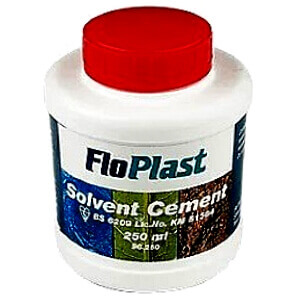Solvent Cement ABS COSHH Assessment Form

A three-page COSHH Assessment Form, with some example text reading:
First aid details:
After significant accidental inhalation, Remove the casualty from exposure, ensuring one's own safety while doing so. Keep the casualty in a safe environment where there is fresh air until the narcotising effect has worn off.
After contact with eyes: Do not rub eyes, as additional cornea damage is possible by mechanical stress. Remove any contact lenses and open the eyelid(s) widely to flush eye(s) immediately by thoroughly rinsing with plenty of clean water for at least 20 minutes. If possible, use isotonic water (0.9% NaCl). Contact a specialist in occupational medicine or an eye specialist.
After skin contact: Wipe off with tissue and wash the contaminated area.
After significant accidental ingestion: Wash out mouth with water. Do not induce vomiting. Immediately consult a physician.
ABS solvent cement is a highly specialised adhesive commonly referred to as "pipe glue" or "PVC cement." It is specifically designed for the chemical bonding of ABS (Acrylonitrile-Butadiene-Styrene) pipes and fittings. This unique adhesive operates by melting the surfaces of the ABS materials, thereby forming a robust, durable joint that effectively creates a permanent weld instead of merely glueing the pieces together.
Unlike traditional adhesives that rely solely on physical bonds, solvent cement chemically interacts with the ABS surfaces, resulting in a single, cohesive unit of plastic. This bonding mechanism is crucial for ensuring the strength and longevity of plumbing systems.
ABS solvent cement is primarily used in various plumbing and piping applications, particularly in drain, waste, and vent (DWV) systems, as well as in sewer systems. Its formulation contains specific solvents that actively dissolve the ABS surface, enabling the material to meld together. As the solvents evaporate, the ABS undergoes a polymerization process, solidifying and forming an exceptionally strong, leak-proof joint that can withstand the pressures of fluid flow and various environmental conditions.
It is important to note that ABS solvent cement is not suitable for joining ABS to other types of plastics, such as PVC or CPVC, as each type of plastic requires a compatible bonding agent. To achieve optimal results, it is essential to use the correct type of solvent cement tailored for ABS applications.
Before applying the cement, it is essential to thoroughly clean the joints to remove any dirt, grease, or contaminants that could hinder the bonding process. Adhering to all safety precautions is also paramount when working with solvent cement, as it contains flammable solvents. Always work in a well-ventilated area and use appropriate personal protective equipment to ensure safety during application.
This document is:
- RRecognisedby local authorities
- RRecognisedby principal contractors
- Suitable for CDM sites
- Approved by H&S managers
If you want others to have confidence in your company, download and buy the proper documents today.
As with all our documents, our risk assessments are in Word™ format and available for instant download and use. You only need to buy them once.
Once you buy and download this document, it’s yours for life to use repeatedly.
Why not browse the HSEDocs catalogue of method statements, risk assessments, COSHH assessments, or industry-specific packages?
And for safety training relevant to your job, visit our online training courses.
GET THIS DOCUMENT
£8.99+VAT
- Available in Word™
- Fully customisable
- Add your Company Logo
- UK & EU Compliant

 CART
CART 